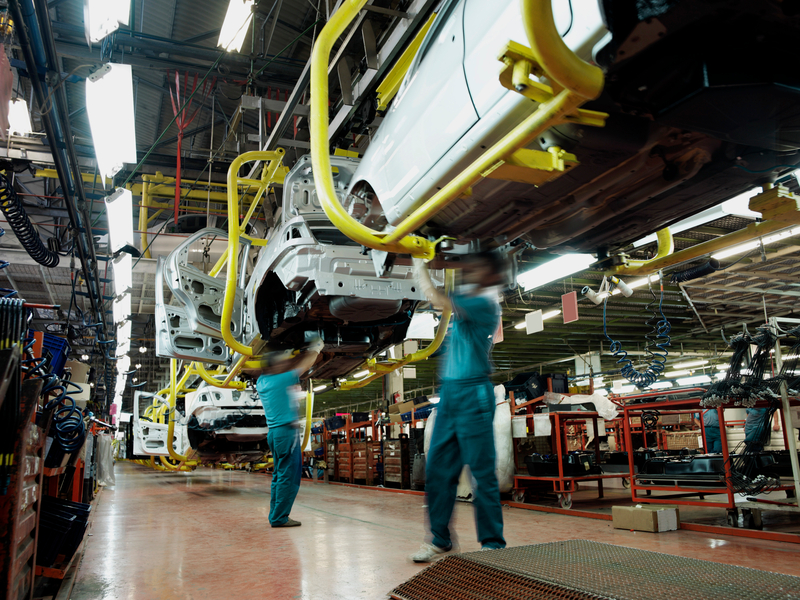Chinas and Indias car parcs – already two of the worlds largest – will double by 2023, a new study predicts. As lubricants volumes boom, providers must cope with each nations idiosyncrasies to effectively distribute through their aftermarket service channels.
A Frost & Sullivan-commissioned report released by the United Kingdoms Society of Motor Manufacturers and Traders in September found many similarities in the two countries driving habits and vehicle population forecasts, along with some nuances in the methods suppliers could take to effectively sell aftermarket products such as lubricants.
For example, a whopping 94 percent of all the approximately 200 million vehicles on Chinese roads are consumer-owned, while only 4 percent are owned by commercial entities and only 2 percent are leased by consumers. In India, its the opposite. India has a higher share of company-owned vehicles than personal-use automobiles, suggesting that… suppliers should target company fleets rather than consumers to grow their sales.
Indias fleet is dominated by two-wheelers, with more than 150 million motorcycles and scooters registered compared to just 23 million cars. Volumes of both types of vehicles are increasing there, but cars will grow more rapidly and are expected to reach 50 million by 2023.
Many Chinese drivers are first-time vehicle owners, so they may lack the knowledge and understanding of how to properly maintain and repair their vehicles, the report explained. However, although its currently the worlds youngest vehicle parc, the average age of cars on Chinas roads is set to grow from around 3 years old last year to about 5 and a half in 2022.
But while China will see more cars sold, those cars will be driven less in coming years. Future restrictions on when and where people can drive, as well as developments in public transportation systems, will reduce the average kilometers driven significantly. In contrast, Indias rapidly advancing infrastructure developments and growing economy will debottleneck congestion and put more drivers on the road.
The report pointed out that distribution for aftermarket products such as lubricants is more difficult in China than in the West. Unlike the mature regions of North America and Europe, where two-step and three-step distribution models are common, China has a more complex network of small- and mid-size parts sellers that makes it harder to reach customers directly.
Chinese do-it-yourself customers are likely to purchase their lubricants and car parts online through sites such as Tmall, Taobao and Autozi. Do-it-for-me drivers go to Chinas many types of service locations. The country has more than 460,000 locations, Frost & Sullivan estimated, and 57 percent of them fall into a category the firm describes as the unorganized sector – workshops with dirt floors that lack modern tools and equipment and are more likely to use counterfeit parts. Organized repair garages follow in prominence at just shy of 117,000 locations, while independent body shops and motor vehicle dealers each account for 20,000-25,000. There are around 14,000 tire dealers and approximately 12,500 oil change and lubricant shops. Indias ratio of service location categories is very similar.
In China, independent workshops often source their parts and products from auto parts cities, which are places which feature clusters of distributors and repair shops specializing in braking, suspension, exhaust and other products, and provide a platform for small distributors to share resources – related products, information and a good location – to reach customers. A typical auto parts city could have more than 250 distributors of all types of auto care products in an area of 250,000 square meters.
The report suggested that foreign marketers hook up with a Chinese joint-venture partner, which is legally required and helps the exporter effectively navigate cultural differences. Suppliers should also focus on defending their intellectual property in China, as counterfeit products are a common concern there. The same goes for India, where as much as 45 percent of aftermarket auto care products are counterfeit.
Selling products that meet an all-makes-and-models benchmark is nearly impossible in China, as there are more than 100 vehicle brands present in the market. However, the high degree of fragmentation means there are… opportunities to fill coverage gaps or identify niche segments.
The consultancy said that in India, suppliers must be able to support [Maruti Suzuki, Tata Motors and Mahindra & Mahindra] to gain market share, as these original equipment manufacturers make up more than 60 percent of passenger vehicles on the roads.
Maruti Suzuki leads all automakers in India with 1,200 dealerships and the best-selling models, while Volkswagen is Chinas top OEM in terms of network size in China with 2,750 showrooms. Chinas state-owned SAIC Motor Corp. – which has a joint venture with Volkswagen – sells the most units by far.
In both countries, Bosch Car Service has the largest chain of locations in the retail channel with more than 2,000 franchised service centers in China and more than 260 locations in India.
In China, Tmall.com is the most prominent online provider of aftermarket auto care products, and the largest warehouse distributor is Jiangsu CarZone Investment, which has 200 physical stores and 12 storerooms covering 15 Chinese provinces.
Indias e-commerce model is growing, but is not one of its top distribution channels. Instead, Bosch, Mahindra First Choice, myTVS, Carnation, Castrol Pitstop and other multi-brand service chain outlets are popular and proliferating.
Photo: gerenme /iStock
